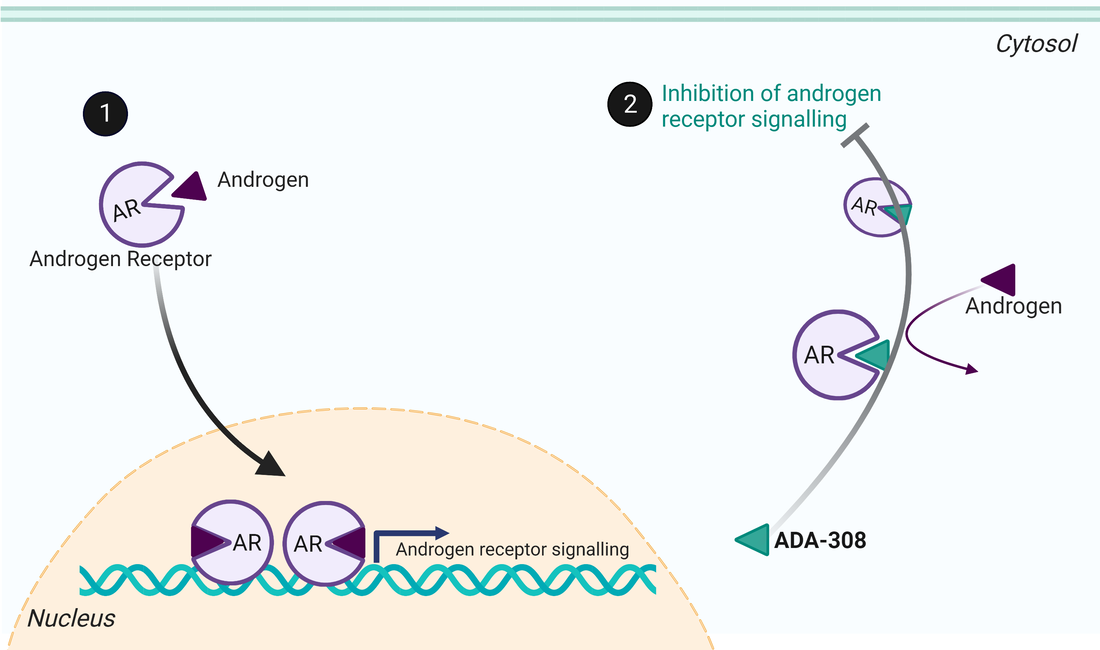Aranda’s proprietary ADA-308 molecules are small molecule, androgen receptor (AR) signalling inhibitors originally designed to overcome treatment resistance in advanced prostate cancer (Nouruzi et al. Oncol reports 52: 132, 2024). Due to excellent solubility and stability properties in topical route-oriented excipients and optimal pharmacokinetic profile the compounds are under investigation as topical treatment for acne and hair loss (androgenetic alopecia).
Mechanism of action for ADA-308. 1. Androgen binding to androgen receptor, AR, triggers AR nuclear translocation and AR mediated signalling. 2. When ADA-308 binds to androgen receptor, androgen cannot bind to receptor and AR activity is inhibited.
Created with BioRender.com.
Created with BioRender.com.
ADA-308 molecules have unique properties for AR-related disorders. As a best-in-class non-steroidal, purely AR targeted agents they provide a much-needed topical alternative for systemic hormonal treatments for all acne and AGA patients. In non-clinical models ADA-308 molecules have been shown to act locally in skin and lack systemic antiandrogenic effects making them suitable also for men. Excellent safety profile with non-skin-irritating properties makes them a viable alternative to be explored as a combination treatment to other topical agents for maximum efficacy and relief of acne or AGA symptoms.
The properties of our ADA-308 antiandrogens
|
|
* almost completely blocks androgen-induced lipid synthesis in cultured sebocytes
** 100% response in animal studies evaluating hair growth promotion potential |
Mechanism of action for ADA-308 in acne and androgenetic alopecia (AGA). A. Respective pathologies of acne or AGA. B. Main site of action for ADA-308 in acne (sebaceous glands) and in AGA (dermal papilla). C. In the respective cells, sebocytes or dermal papilla cells, the androgens bind to the androgen receptor, triggering AR nuclear translocation and AR mediated signals, leading to excessive sebum production in acne or miniaturization of the hair follicle in AGA. D. When ADA-308 binds to the androgen receptor, the androgen cannot bind to the receptor which prevents nuclear translocation and AR activity is inhibited. In acne, this means reduced sebum production. In AGA, this means reduced hair miniaturization and consequently less hair loss.
Created with BioRender.com.
Created with BioRender.com.



